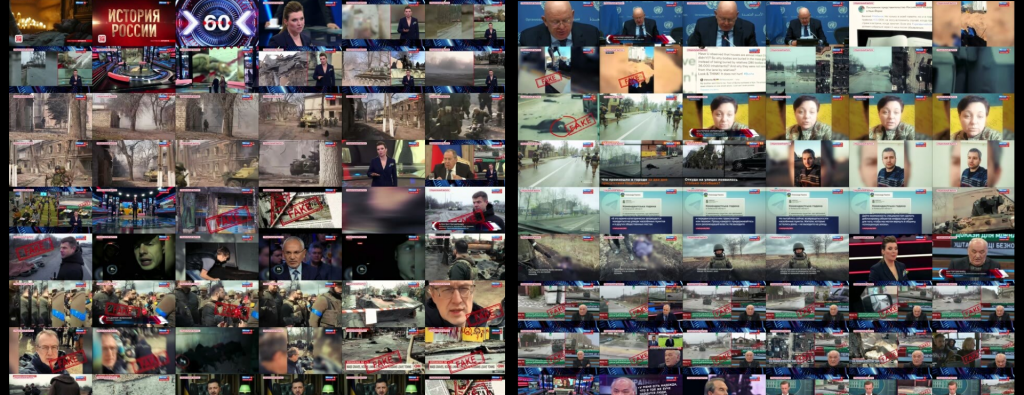Over the past several days we've explored applying ffmpeg's built-in representative frame detection "thumbnail" filter, returning to our earliest experiments when we first launched the Visual Explorer. Why are we suddenly interested in thumbnails again after settling on our 1/4fps sampling strategy for the Visual Explorer? The reason lies in the single representative thumbnail that we display as a visual placeholder for each broadcast. Currently these thumbnails are simply selected at the 60 second mark using a fixed time-based filter. Unfortunately, for many channels these yields less-than-ideal results, such as the uniform and utterly uninformative grid below. Could we use algorithmic thumbnail detection to more intelligently select a better, more representative, thumbnail for each broadcast, drawn from the first 10% of the show for computational efficiency?
Using a trivial ffmpeg one-liner applied to the Visual Explorer's existing 1/4fps thumbnails used to generate its thumbnail grids, we can readily select a far more visually representative single-image thumbnail for each broadcast, solving the uniform thumbnail challenge.
Below is the uniform grid for a single channel on a randomly selected day from last month. Clearly the existing thumbnails are less than useful.
What if we take one of those broadcasts and apply ffmpeg's built-in thumbnail filter to select the single most representative frame from the first 100 Visual Explorer 1/4fps images (the first 400 seconds of the broadcast) or from the entire broadcast?
Representative thumbnail from first 100 VE frames:
From the entire broadcast:
How about a second broadcast from that set?
Representative thumbnail from first 100 VE frames:
From the entire broadcast:
